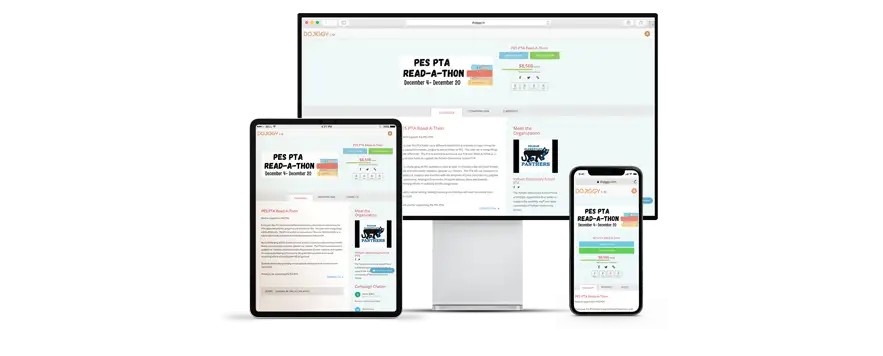The Ultimate Guide to Event Planning for Nonprofits
12 Key Steps to Nonprofit Event Planning
With Considerations for Virtual and Hybrid Fundraising Events
All nonprofits and charities strive to create unforgettable and engaging fundraising events while exceeding donation goals. But how can you make this dream a reality? Embarking on a fundraising event requires detailed planning and a well-structured timeline. Whether you’re organizing a charity gala, a community walkathon, or a virtual fundraiser, every detail counts.
Follow our Ultimate Guide to Event Planning for Nonprofits to create an extraordinary fundraiser and turn out an exceptional charity campaign. Every fundraiser is different, but any nonprofit campaign will benefit from applying these steps and event details.
Successful Nonprofit Event Planning
You must have a solid plan to get the most out of a fundraising campaign. So, if you want to boost your cause’s exposure, generate more donors, and smash your fundraising goals, dive into our nonprofit event planning checklist.
- Get Your Event Planning Committee Together
- Set Fundraising Goals
- Host An Unforgettable Event
- Know Your Audience
- Make It Simple To Participate And Donate
- Recruit Great Event Sponsors
- Generate Hype On Social Media
- Optimize Engagement With Your Supporters
- Have Fun With Gamification Elements
- Stay In Touch With Your Donors
- Offer Hybrid And Virtual Fundraising Options
- Show Your Donors How They Are Making An Impact


Get Your Event Planning Committee Together
While some fundraising campaigns can be relatively simple to plan, don’t try to go it alone. Start by assembling an event planning committee to handle the various planning tasks. Even if your organization works with a professional nonprofit event planner, a committee is still needed to direct the planner’s activities. Determine your fundraising goals together with your event team and create a roadmap to get there.
If you are unsure who to ask to join your committee, start with your Board of Directors and network of supporters. Often, you will find that not only will some of your board members know who to contact for the benefit of the fundraiser, but they are also local business people or work in offices or businesses where they can ask for donations and spread awareness.
All successful fundraisers rely on the recruitment and action of a strong leadership team. So get a nonprofit event planning committee in place early to help with the event logistics and capitalize on your fundraising campaign.
Set Event Fundraising Goals
Before starting a charity campaign, it is vital to set clear fundraising goals by brainstorming financial and non-financial aims. Remember that you want to bring awareness to your cause, satisfy your supporters’ needs, and reach or exceed your fundraising goals.
Here are a few questions that might help you decide what direction you’ll take when planning your next event:
- What are you raising money for? Where will the funding go? A new library or medical equipment? It’s best to be specific here.
- What is your target fundraising goal? You’ll need a fundraising budget to add in event planning costs.
- What is your budget? Look for in-kind donations, but be realistic about upfront costs and how they will impact your fundraising event planning.
- What are your non-financial goals? How do you want to boost audience levels and supporter engagement?
Tips For Setting Fundraising Event Goals
- Events with fundraising targets raise, on average, 46% more than those without. So aim high and spread the word about your goal.
- Create a sense of urgency – Why not challenge your friends to donate by a certain date? By doing this, you can create an incentive to donate sooner rather than later.
Don’t overstretch yourself when setting your fundraising goals. You want to generate as much money and awareness as possible for your cause without having your campaign suffer. So remember to be realistic when planning your budget and overhead costs.


Host An Unforgettable Event
There’s no doubt about it – people want to participate in a fundraiser that stays in their minds long after the event. Good nonprofit event planning is all about creating great memories of a fun, exciting, and engaging campaign while generating money to benefit a great cause.
- Host the event at an interesting venue to grab your supporter’s interest – a theater, private country club, or a themed restaurant.
- Create an event theme – themes help get everyone in the mood with relevant costumes and attire, decorations, and food and drink.
- Show a short, meaningful video during your fundraising to tell the story behind your cause. Make it personal and touching so your audience understands why you raise money and awareness.
- Create personalized merchandise to sell in your online store. Your supporters will have something to take away with them and remind them of the event long after it’s finished.
Making a lasting impression in the minds of your supporters is crucial to getting the most out of your fundraiser. Successful fundraising events can turn into signature fundraising campaigns that your supporter base looks to year after year. So get creative and make it unforgettable!
Know Your Audience
Event planning for nonprofits goes way beyond the actual event day. To get the best out of your fundraiser, you must understand your target audience’s needs, preferences, and ability to give. Here are a few critical factors to consider when researching your supporters.
Demographics
A great place to start researching your target audience and donors is by looking at the demographics. You will gain valuable insight into your donors by looking at the following indicators:
- Age
- Gender
- Life stage
- Ethnicity
- Geographical location
- Employment
- Income
By researching these points, you can determine what direction you want to go with your campaign. For instance, say you have a global audience connecting from all over the world. You will need to offer a schedule that will suit everyone to participate. People attending your fundraiser will appreciate your consideration of their needs when planning the upcoming event, resulting in more generous donations, spreading the word about your cause, and growing your audience.
Engagement History
Once you have gathered demographics about your target audience, it’s vital to understand their needs and engagement history with your cause and organization. Factors to consider are:
- What are their motivations and ways of thinking? Likes and dislikes?
- Do supporters have a history of giving to your cause/organization (one-time, recurrent or major donors)?
- What is their prior involvement? Have they volunteered or benefited from your organization’s services?
- How did they first find out about the cause?
- How have you communicated with them in the past (emails, direct mail, social media)?
Learning about your target audience’s past involvement with your organization or cause will increase the success of your fundraiser by adding a personal and familiar touch to donor engagement.
Lastly, target audience research doesn’t necessarily need to be one-sided. The more your potential donors know about the cause or organization you’re raising money for, the more they will be inclined to give. Using social media to interact with your donors and encouraging them to offer their ideas and opinions is vital to maintaining relationships and building new ones.

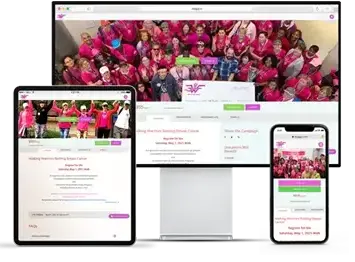
Make It Simple To Participate And Donate to the Event
Choosing the best event management software is essential to the success of any charity campaign. Opt for our simple, free platform with optimized event registration and donation pages. Our fundraising websites provide nonprofits and charities with dynamic, branded fundraising pages to successfully take online registrations and securely collect event funds.
Here are a few points to consider to simplify donations and online engagement for your supporters:
Mobile Giving
Our Text-To-Donate and mobile giving tools provide great ways to increase donation levels. Text-to-Donate allows your donors to easily give to your organization or charity at any time from anywhere, right from their mobile devices.
An Easy-to-Navigate Webpage
Our easy-to-use platform provides a complete fundraising campaign management experience. Sell event tickets, custom printed products, and raffles on a streamlined checkout page. With crowdfunding campaigns, event planners can customize the software for individuals and teams using personal fundraising pages. Securely register or import event participants and process donations and pledges for peer to peer and Athon campaigns, allowing your organization to raise more money than ever.
A Clear Timeline of Events
Make your schedule clear by creating and publishing a campaign timeline on your fundraising site. Post it on social media, your website, and any other communication platforms you are using.
Contingency Plans
Back-up plans are essential for any fundraising event, especially in uncertain times. Make sure you have plans B, C, and D – just in case you need them. Offer virtual and hybrid fundraising options so that your supporters won’t miss out, in case an in-person event is canceled or for those who don’t feel comfortable participating in person.
Recruit Great Event Sponsors
Corporate or community sponsors are critical in most successful special event fundraisers. These corporations and local businesses help increase an event’s success by promoting it to their employees and customers via social media, which is helpful when it is time to attract the attention of local media and recruit participants and volunteers. But, most importantly, sponsors create a financial backbone by helping to offset event costs.
Understanding and articulating how prospective sponsors benefit from working with your organization is important to sponsor recruitment. This becomes the foundation for selling sponsorship opportunities. Everyone likes to help out a great cause. However, companies are looking for a win-win relationship when investing in events. Be sure to explain precisely how sponsoring your charity event will provide value to the local businesses you are prospecting.
Here are some ideas on how to acknowledge your sponsors and thank them:
- Highlight sponsors’ names and company logos on the event website.
- Mention their product(s) or services on your fundraising website and social media.
- Ask your sponsors if they would be willing to provide a gift voucher or gift basket from their company as a silent auction or raffle prize. Check out our Killer Prize Donation Letter Template and Thank You Letter Template here to start.


Generate Hype On Social Media
Marketing and event promotion are essential parts of successful event management. Social media is a great and often free tool to create hype for event fundraisers. Twitter, Instagram, LinkedIn, Facebook, TikTok, and YouTube are just a handful of social media platforms to inject a boost of energy into your nonprofit’s event planning process.
By posting fun videos, engaging stories, and interactive polls, you will generate interest and raise awareness for your cause. The more people you can attract, the more likely you will gain new donors and volunteers.
Why not set up a hashtag challenge to get people participating and familiar with your cause? This has been the trend with a number of charities recently, and the global attention that can be reached is staggering. Sharing old photos for #ThrowbackThursday while adding your fundraiser link will add unique exposure to your campaign and encourage people to get involved. If they enjoy the challenge, the next step will be to join the fundraiser.
Embrace the power of social media by sharing your fundraiser on Facebook and LinkedIn groups. The more people that know about your cause, the better.
Optimize Supporter Engagement
Engagement is key to attracting supporters to join your events and give generously. Make your campaign interactive, fun, and visual to get people spreading the word about your fundraiser. This will result in growing your donor network and exceeding your fundraising goals.
Here are a few ideas on how to grab people’s attention so they want to get involved in giving to your cause:
- Videos – Post fun and meaningful videos on your fundraising website and social media to get people thinking about the story behind your fundraiser. Videos can have a huge impact on creating awareness of your cause.
- Live-streaming – Streaming can be another great way to engage your followers. Adding a live-streamed video to your fundraising campaigns allows attendees to join in the fun and start giving. Our live-streaming platform allows users to interact with your cause. Why not try live streaming for drawing raffle winners or online auctions, live interviews, and Q& A Sessions with a panel, beneficiaries, or volunteers or for campaign Kick-Offs (especially for P2P campaigns to motivate fundraisers)?
- Send Updates Regularly – Updates and reminders keep your donors in the loop regarding your fundraising campaign. Remember not to inundate your followers with messages, as it might be overwhelming, but also don’t leave them in the dark. The idea is that while your supporters check their social media accounts or fundraising page for updates about the campaign, remind them that they are simply a click away from donating.
Engage your donors with updates and reminders about:
- How to donate – Text-to-Donate, your fundraising website, or phone number.
- Any changes to how to donate (number/keyword changes) or to the campaign?
- The progress of fundraising goals.
- Popular charity auction items to engage interest.
- Any milestones reached during the campaign process.
- An important webinar or a new story that is scheduled.
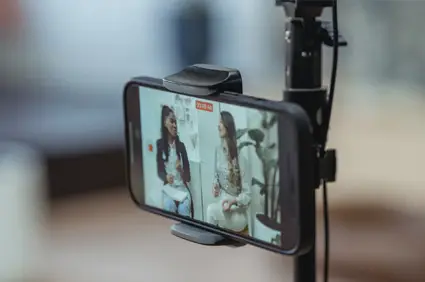

Make Nonprofit Events Fun With Gamification Elements
Visual online tools to help boost engagement are key to increasing your donor network. Maximum interaction is the goal when attracting donors to your campaign and getting the most out of your fundraising event. Incorporating gamification tools and elements into your nonprofit event planning is a great way to do this.
Here are some top gamification ideas that will bring your supporters together to support a good cause, create a healthy sense of competitiveness, and have fun all at the same time:
- Free fundraising thermometers are used to monitor the progress of funds raised for an online fundraising campaign and are included in all of DoJiggy’s fundraising website templates. Our peer-to-peer crowdfunding platform uses thermometers at the individual fundraiser, group, and campaign levels.
- Leaderboards build excitement and competitiveness among your P2P crowdfunding campaign participants. Our free leaderboards monitor individual and team fundraising leaders.
- Trophy widgets will appear on personal and team fundraising pages to showcase a participant’s rank or when they have reached a certain prize level that participants and donors alike will love to see. The function is completely configurable for your prize levels and ideas.
- Online polls are a great tool for audience engagement. Find out what your donors are thinking by simply asking them. Twitter and Instagram are two of the social media giants using polls to interact with their followers, and it works.
- Quizzes are another fun gamification element to boost attendee engagement during your fundraising campaign. You can create quizzes through polls or add the latest ‘quiz stickers’ offered by Instagram Stories, which ask a series of questions and give multiple-choice answers.
- Games – It’s human nature to enjoy a little competitiveness, so why not add some fun, interactive games to your campaign to boost donor engagement? Gamification features often increase the sense of urgency when giving, which is great when you want to go beyond your fundraising goals.
Grabbing your donors’ attention is key to smashing your fundraising goals, and utilizing these interactive gamification tools will leave your supporters wanting more.
Stay In Touch With Your Donors
Without generous donors, even the most hyped fundraiser of the year will fail to generate proceeds for its cause.
Keep this in mind from the first point of contact. During the online campaign, check in with your supporters with fundraising updates and progress posts. Collect contact details to personally thank them for their donations and participation. Recognition and validation are priceless in maintaining a fruitful relationship with your donors and sponsors. Remember that if your followers have a great fundraising experience, they will return for future events, so stay in touch.
Don’t forget to collect contact details from event volunteers as well as donors to strengthen relationships and for future event planning.


Offer Hybrid And Virtual Fundraising Options
More than ever, inclusivity is key to getting the most out of event planning. Offer alternative engagement methods, such as incorporating virtual events and hybrid elements, so all your supporters can connect to your fundraiser. Consider that not everyone is mobile or has access to join an in-person event. We are still not completely safe from Covid-19, and some supporters may find a live, in-person event daunting. By providing alternative ways to connect, everyone can participate in virtual fundraising events from their garden, sofa, or office.
Remember that you may have donors participating from all sides of the globe with different time zones, so make sure that you choose a timeline that everyone can follow. Don’t forget that hybrid campaigns aren’t limited to a one-day event, so if you think it best suits your supporters’ needs, extend the duration so nobody misses out. However, ensure you have a cut-off date to close your fundraiser properly and not lose vital engagement with your event attendees.
Take a look at our guides on virtual and hybrid fundraising.
Show Your Donors How They Are Making An Impact
People love to know the impact of their giving, so let them see exactly how their donation will help. Below is an example of how your supporters’ money could be used if you are raising money for an animal shelter:
- A $15 donation pays for a new litter tray and warm blanket
- A $25 donation pays for a new bed and a dog bowl
- A $50 donation pays for treats, a bed, and toys
- A $100 donation pays for veterinary care, a VIP membership, a bed, and toys.
Make it clear to your audience what you are raising money for so they know how they will personally be making an impact. When people can visualize where their money will go and how it will be used, they often feel more comfortable giving.

Fundraising Event Planning Timeline and Checklist
If your group is planning a nonprofit or charity event, an event timeline and checklist are likely needed to help your team keep track of all the details. From initial brainstorming to the final thank-you notes sent to supporters, a comprehensive checklist can be your compass. We have created this sample checklist for a live event and included tips for peer-to-peer fundraising events. Your fundraising team can modify it for your event planning needs, ensuring your group creates a memorable and impactful fundraising event that resonates with your audience.

6 Months Up to One Year Prior to the Charity Event
- Select your event planning committee members
- Determine your event date and reserve the event venue
- Prepare a fundraising event budget with fundraising goals in mind
- Set your P2P crowdfunding event theme
- Review any documentation available from the previous year’s event
- Identify and contact keynote speakers
- Reserve necessary vendors and entertainment
- Set registration fees and tentative event schedule
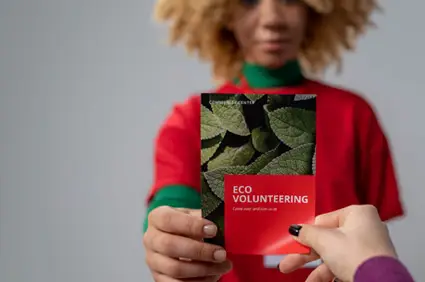
4 to 6 Months Before the Event
- Prepare sponsor proposals and begin soliciting event sponsorships
- Start recruiting volunteers
- Go live with your fundraising event website
- Create promotional materials
- Distribute flyer with registration materials
- Begin selling tickets online
- Send personal invitations to board members and major donors

3 Months Before the Event
- Set menus and decorations
- Manage logistics (reserve AV needs for speakers, table rentals, tents, etc.)
- Determine room set-up (or event map if outdoor event)
- Confirm event/conference schedules with guest speakers, volunteers, etc.
- Send Email campaigns promoting event and ticket sales
- Social marketing and PR campaigns
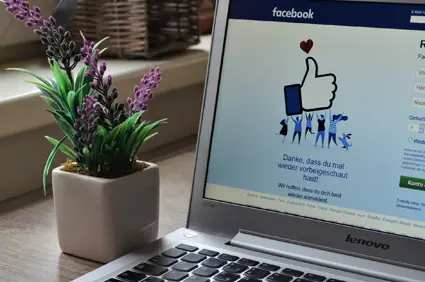
1 Month Before the Event
- Prepare printed event brochures and event signage
- Preliminary meal confirmations (based on ticket sales)
- Social marketing and PR campaigns continue
- Make a list of contingency plans

2 Weeks Before the Event
- Final tallies and registration confirmations
- Send volunteer schedules, sponsor details, and all forms
- Meeting run-through with key staff members and volunteers
- Promotional efforts and registrations continue

1 Week Before the Event
- Assemble event or conference packets and goodie bags
- Print registration forms and name tags
- Report final quantities to the caterer or vendors
- Hype the event on social media to attract last-minute participants and donors

Tips for Event Day
- Arrive early for event setup
- Keep a file on hand with all vendors and contracts
- Have a communication plan for employees and volunteers (mobiles, walkie-talkies, etc.)
- Assign runners that can help as needed when issues arise
- Have fun!

Post-Event Wrap-up
- Send appreciation letters to speakers, sponsors, donors, and volunteers
- Have staff, attendees, and volunteers complete event evaluation forms
- Be sure your nonprofit CRM and donor management software is updated with event information
- Review and pay any outstanding bills
- Host a wrap-up meeting to evaluate the success of the fundraising event
Our Top Ideas For Fun And Engaging Fundraising Events
Be sure to get started on the right foot with your fundraising event planning by carefully considering the type of event that you want to host. You’ll want to consider many factors in choosing a nonprofit fundraising strategy that works for your organization and constituents.

An unforgettable fundraiser will stay in the minds of your supporters long after the actual event has finished. Create a stand-out, engaging campaign that triggers emotion amongst your donors, research your target audience and their needs, and you will have a profitable and memorable evening.
Here are some ideas for nonprofit event planning when your team has more time and resources:
- Plan a charity auction with a fund-a-need campaign. These are fun, energetic events that can obtain high proceeds in little time. It’s a win-win!
- Hosting a walk-a-thon fundraiser is a great way to get everyone out into the fresh air and create a sense of togetherness for a common cause. For those who can’t attend in person, consider making it a hybrid event to increase your outreach.
- Charity golf tournaments are popular for many reasons. See our golf tournament planning resources to get started.
Here are some ideas for effective nonprofit event planning when your team is small and has less time and resources:
- Online 50/50 raffle
- Online product sales
- eCommerce Store with automated fulfillment
- Virtual mini-gala, happy hour, or performance
DoJiggy Delivers Donor-Friendly Software for Nonprofit and Charity Events
